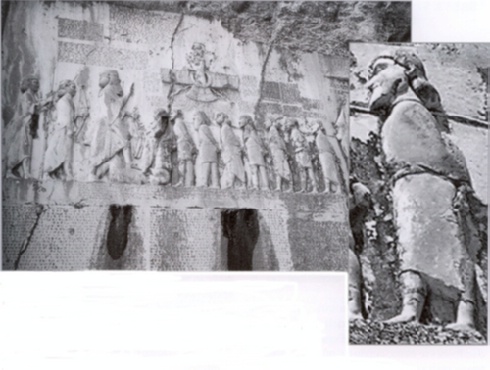From Prehistory to History
From an archaeological point of view, the area of Adji Kui is part of the so-called "Bactrian-Margian complex" (BMAC), which leads to considerations regarding the name "Margiana ", often a source of misunderstandings. The name derives from the ancient Persian Marguş which, according to certain authors, is in some way connected to the ancient river Murghab which was called Margoş by the Greeks.
Herodotus (484-425 BC) does nothing to clarify the situation. In Book III of his "History ", § 92, he talks of satrapies set up by Darius between 518 and 514 BC, writing that the Margi (Margiani?) belong to Province XI, Ircania, together with the Caspians, Pausicae, Pantimathi and Daritae, whilst the Bactrians were part of Province XII, Bactriana. Since he generically defines as "Indians" the Chorasmians, Sogdians and the Margi, and confuses the Caspians of India (Province XX) with those of the Caspian Sea (Province XI), it is difficult to ascertain exactly where the Margians lived. Only in the famous inscription of Behistun (or Bisutun) in 516 BC does Darius explicitly and for the first time use the name "Margiana "(col.2.2; col.3.3; col.4.2), stating emphatically how Ahuramazda had helped him to defeat Frâda, king of Margiana, who had rebelled against him and who had been brought before him in chains, before the Scythian king Skunki. This is, moreover, the oldest depiction of an inhabitant of historical Margiana.
We therefore know that during the era of Darius there was a Margian "kingdom " to the NE of Persia, between the Caspian and the Oxus, but we do not know its precise location, nor how far it extended, nor even the name of its capital. It is only when we come to Alexander the Macedonian that we can talk of Margiana as a proper geographical entity, with precise borders and political-military centres.Before that time Margiana remained, historically, a region incertae sedis. On the contrary, the "Margiana " of the Bronze Age which interests us, is a simple conventional locus created by archaeologists to identify the region crossed by the Murghab which cannot in any way be connected to the historical Margiana of the Achaemenid Era. We shall probably never know what name the ancient inhabitants of the Delta gave to this region, at least not until we find some written testimony. As a result, any hypothesis regarding territorial, governmental or religious organisation remains just that, even if careful archaeological excavations succeed in reducing the margin of doubt considerably.
(ibid., p. 28-29)
Source: Rossi Osmida ,G.: Adji Kui Oasis. Vol.I: The Citadel of the Figurines.Venice: Il Punto Edizioni 2007.

